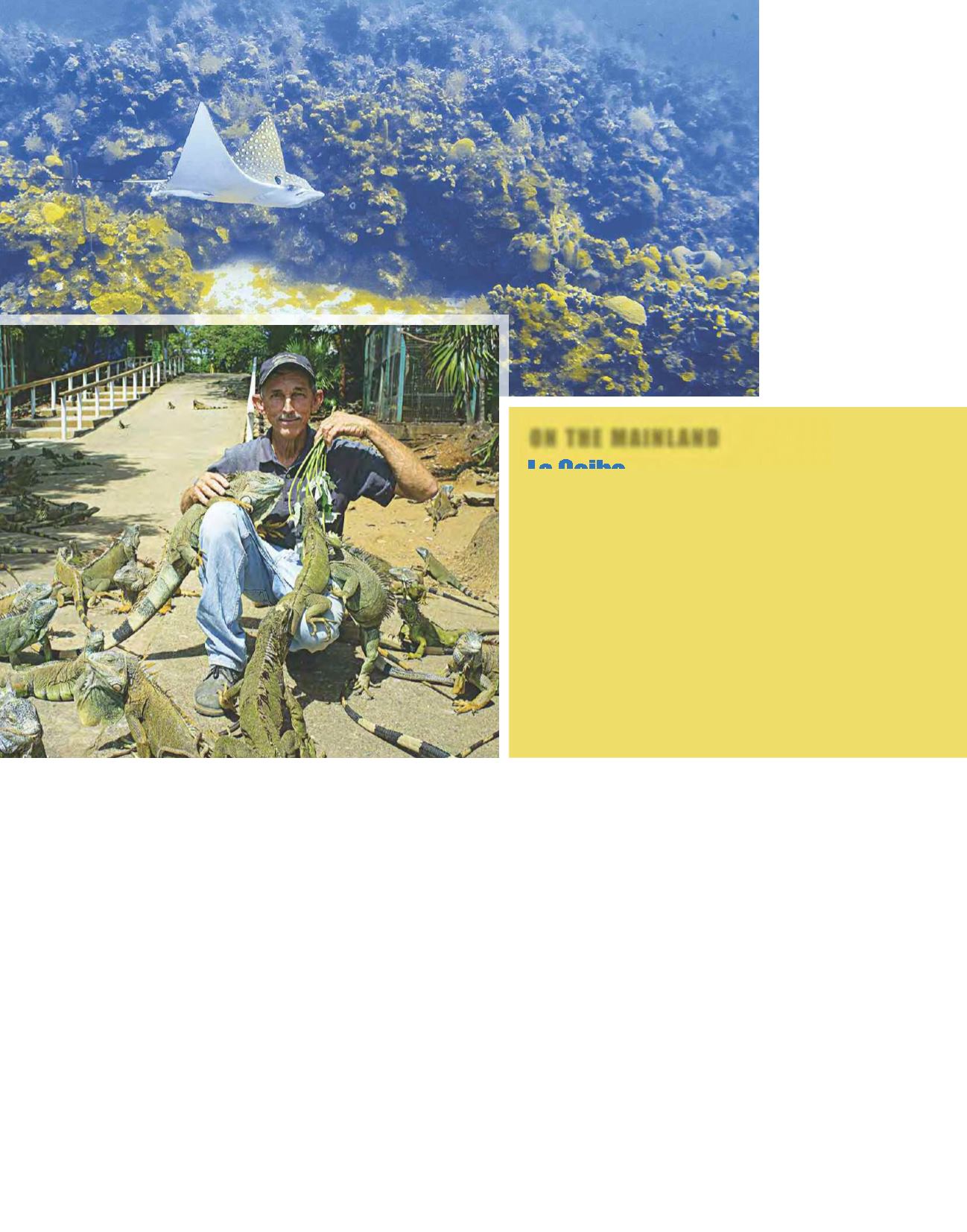

42
INTERVAL WORLD Summer 2015 IntervalWorld.com
Eastward
So far we’ve been exploring Roatán’s western half; the following day,
we set out to explore the less-visited eastern half. Of course, there
are plenty of excellent dive shops and sites here, too. After I head
out for the morning with Barefoot Divers, exploring coral-encrusted slot
canyons created by an earthquake, Kat and I set out to find Arch’s
Iguana & Marine Park at French Cay.
In 1980, after having watched the ecology of his home impacted,
Sherman Arch forbade iguana hunting and egg collecting on his
extensive property. Instead, he began feeding the reptiles. Their
numbers rebounded, and soon tourists began making pilgrimages
to his home to view hundreds of free-range iguanas.
On the day that Kat and I visit, scores of them sun themselves
in his driveway, as docile as house cats — that is until Arch produces
a clump of leaves for feeding; then they come running, climbing over
one another to get to the food.
Impressed with Arch’s conservation efforts, we set off for Punta
Gorda, a village settled by the Garifuna in 1797. The Garifuna are an
African-Caribbean people who were marooned on Roatán by the
British after uprisings in the Lesser Antilles. They went on to establish
a village, and their culture and language thrive to this day. We stop at
Ruthie’s Garifuna Cuisine and order fried fish as locals slam dominoes
down on the table next to us. Ruthie brings us a whole fried fish,
caught that day, and we watch children play in the water as wooden
fishing canoes come in with bigger fish to fry.
Well-fed and back in the car, we drive as pavement soon gives
way to a dirt road. Eventually, we see a sign for Marble Hill Farms,
and turn not knowing what to expect. We find, seemingly hidden in
the jungle, a gourmet kitchen serving wood-oven pizza, with stunning
views from a two-story watchtower called the Crow’s Nest. We
sample jams, including key lime, pineapple, papaya, cinnamon, and
island plum, made from the on-property 24-acre orchard. We could
spend all day just taking in the sweeping panoramic scene of jungle
and sea, but there’s still road to travel. Bouncing along again, we
drive through the small village of Diamond Rock as the sky begins to
turn pink with sundown. Just as we think we should turn around and
What:
It’s the ecotourism and entertainment capital of Honduras. It’s
most famous for its San Isidro festival, which draws hundreds of thou-
sands of tourists, as well as its white-sand beaches. La Ceiba is
surrounded by nature preserves, including Pico Bonito National Park,
one of the most biodiverse places on the planet.The nearby Cangrejal River
offers exciting Class II, III, and IV white-water rafting.
Getting There:
SafeWay Maritime Transportation offers ferry rides
between Roatán and La Ceiba daily, with one-way trips taking about an
hour and 10 minutes. Round-trip tickets start at $64.
Don’t Miss:
Enjoy local seafood in a gorgeous setting at Itzama, a
restaurant inside the park.
Steve Larese; Arch. Park
LEFT: An eagle ray glides
smoothly through the placid
waters of Roatán.
BELOW: Sherman Arch in his
iguana park.
La Ceiba
ON THE MAINL AND



















